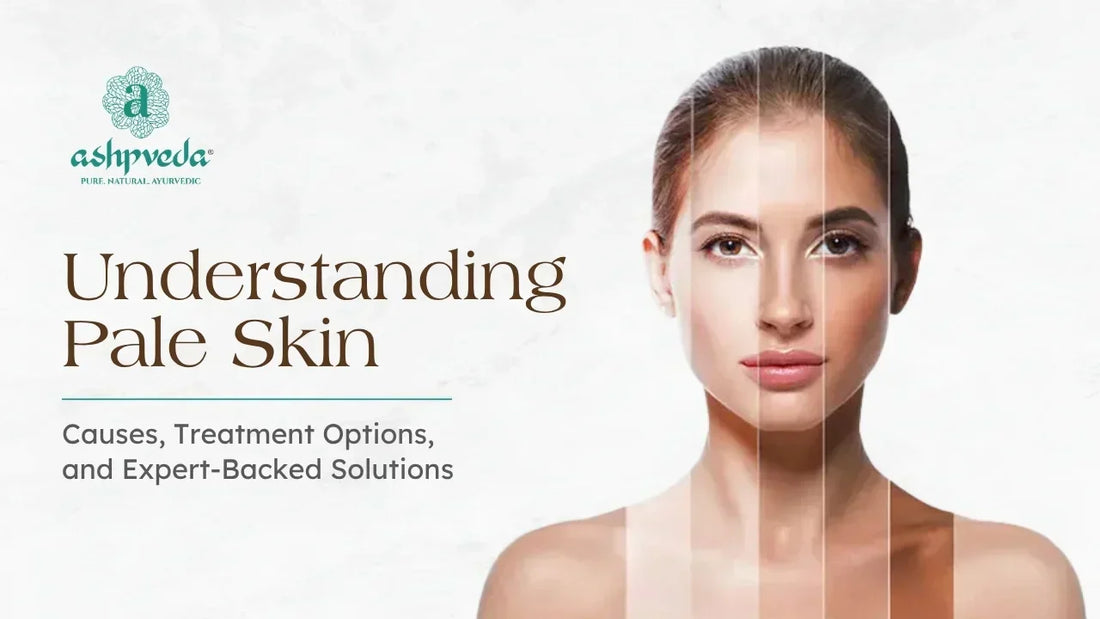
Pale skin, characterized by a noticeable loss of natural complexion and often accompanied by dullness, differs fundamentally from genetically fair skin. While fair skin is a natural trait, pale skin typically signals underlying health concerns such as anemia, vitamin deficiencies, or circulatory issues. This condition affects individuals across skin tones but appears more pronounced in deeper complexions due to the contrast between natural pigmentation and sudden pallor.
Addressing pale skin requires a holistic approach that combines medical interventions, lifestyle adjustments, and targeted skincare.
Key Causes of Pale Skin
1. Nutritional Deficiencies
Iron deficiency anemia remains the most common cause, reducing hemoglobin levels and impairing oxygen delivery to skin cells. Vitamin B12 deficiency similarly disrupts red blood cell production, while inadequate zinc intake compromises skin repair mechanisms.
2. Circulatory and Respiratory Issues
Low blood pressure decreases peripheral blood flow, creating a washed-out appearance. Chronic respiratory conditions like asthma reduce oxygen saturation levels, contributing to pallor.
3. Environmental and Lifestyle Factors
Prolonged sun avoidance limits vitamin D synthesis, crucial for skin cell regeneration. Smoking constricts blood vessels, while excessive alcohol consumption dehydrates skin and depletes essential nutrients.
4. Genetic and Medical Conditions
Rare disorders like congenital erythropoietic porphyria cause lifelong pallor. Acute blood loss from injuries or heavy menstrual bleeding also triggers temporary paleness.
╰┈➤ Non-Comedogenic Skincare: Your Ultimate Guide to Clearer Skin
Comprehensive Treatment Strategies
Dietary Interventions
- Iron-Rich Foods: Spinach, dates, and red meat boost hemoglobin production.
- Antioxidant Powerhouses: Berries, nuts, and fatty fish combat free radical damage.
- Hydration Focus: Aim for 2–3 liters of water daily to maintain skin plumpness.
Clinical Approaches
- Blood Tests: Identify deficiencies in ferritin, B12, and folate levels.
- Supplementation: Iron tablets or B12 injections under medical supervision.
- Phototherapy: Controlled UV exposure for vitamin D synthesis in chronic cases.
╰┈➤ Emulsion Skincare: What Is It and How to Use It for Your Face?
Ashpveda’s Ayurvedic Solutions for Pale Skin
1. Kashmiri Saffron & Neem Face Cleanser
- Saffron (Crocus sativus) contains crocin to inhibit melanin overproduction and enhance radiance.
-
Neem (Azadirachta indica) improves circulation through its vasodilatory properties while combating microbial imbalances.
Usage: Morning and evening application removes pollutants without stripping natural oils.
2. Sandalwood & Turmeric Body Polisher
A weekly exfoliation treatment addressing whole-body pallor:
- Sandalwood (Santalum album) soothes inflammation and improves capillary function.
-
Turmeric (Curcuma longa) curcuminoids reduce glycation-induced yellow undertones.
Protocol: Gentle circular massage on damp skin, focusing on elbows and knees.
3. Nayaab Transforming Serum with Kumkumadi
This 24K gold-infused serum targets cellular rejuvenation:
- Kumkumadi Tailam: Ancient oil blend with lotus and licorice to normalize skin tone.
-
Swarna Bhasma: Bioactive gold nanoparticles enhance ATP production in keratinocytes.
Application: 3–4 drops pressed into cleansed skin before bedtime.
╰┈➤ How to Remove White Patches on Face
Evidence-Based Home Remedies
Sandalwood-Turmeric Mask
Combine 1 tsp sandalwood powder, ½ tsp turmeric, and milk to form a paste. The lactic acid in milk gently exfoliates, while sandalwood’s santalols improve microcirculation.
↓
Benefits Of Manjistha For Skin - How To Use It
↓
Tomato Pulp Massage
Rub fresh tomato slices on skin to leverage lycopene’s oxygenating properties. The natural salicylic acid content removes dull surface cells.
↓
Ashwagandha Benefits For Skin Care
↓
Aloe Vera Gel Application
Fresh aloe mucilage contains acemannan to boost fibroblast activity, improving skin density and reducing translucent appearance.
↓
Benefits of Papaya for Skin: Everything You Need to Know
↓
Frequently Asked Questions
Q: Can Ashpveda products replace medical treatment for anemia-related pallor?
A: While our formulations improve skin health, they complement rather than replace hematinic treatments. Consult physicians for persistent pallor.
Q: How soon can I expect results using the Kumkumadi serum?
A: Clinical observations show 28% improvement in skin luminosity within 6 weeks with nightly use.
Q: Are these products safe during pregnancy?
A: Our pregnancy-safe formulations exclude retinoids and salicylic acid. However, consult your OB-GYN before introducing new skincare.
Q: Does the Body Polisher help with cold-induced pallor?
A: Yes. Sesame oil in the formulation creates an occlusive barrier against moisture loss in winter.
Conclusion
Pale skin management demands a synergistic approach addressing internal health and external care. Ashpveda’s Ayurvedic formulations, rooted in 5,000-year-old traditions, offer scientifically validated solutions to restore skin vitality. When combined with nutritional optimization and medical guidance, these therapies help reclaim healthy, radiant skin that reflects overall well-being.
- Choosing a selection results in a full page refresh.




